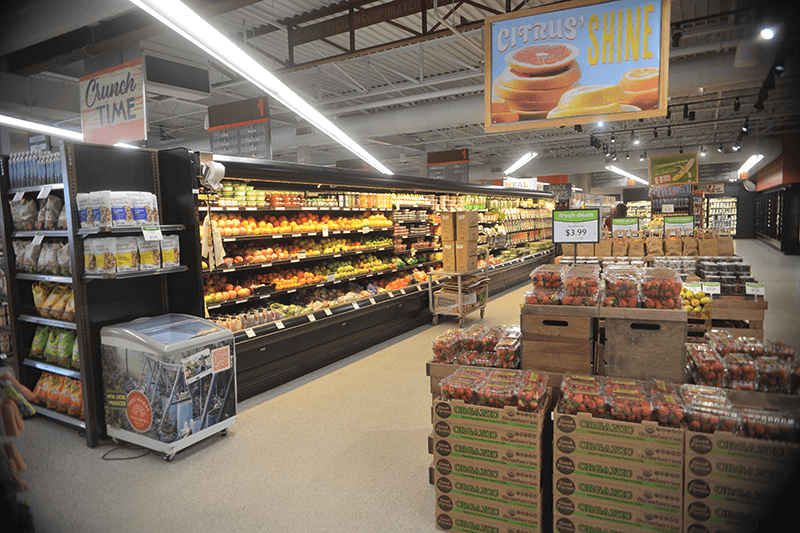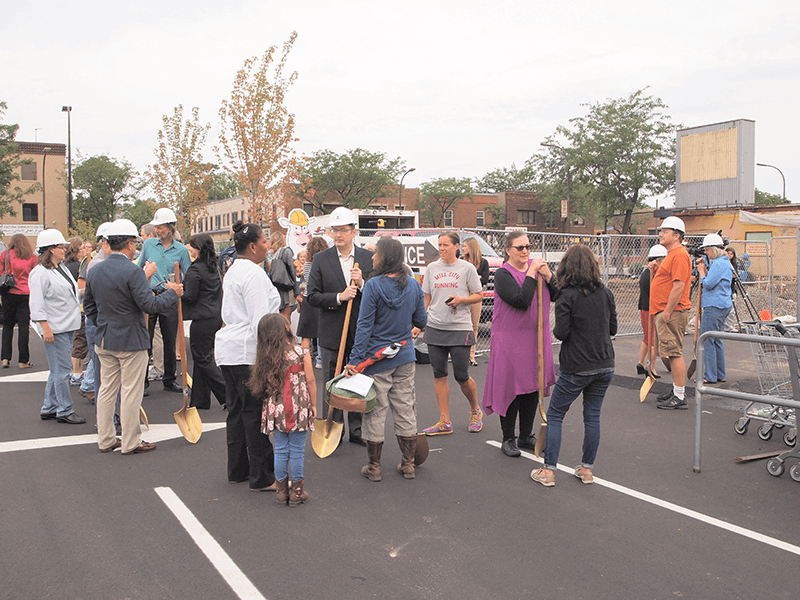The Eastside Food Co-op, a homegrown fixture on Central Avenue, is marking its 20th year of doing business.
The co-op has gone from an idea, to a small, cramped grocery store, to a (sometimes) profitable nonprofit that has expanded to include a beverage bar and a community room.
“Eastside is the pure essence of a neighborhood establishment,” said Tucker Gerrick, the organization’s marketing director. “We weren’t planted in this neighborhood, we are of the neighborhood. We are of this place.”
There had previously been a co-op in Northeast but it closed in 1983. “A grass roots organization was created in 1996 to create a new co-op in Northeast. In fact, there were two groups working at it,” Gerrick said.
One of the planning groups absorbed the other, and the organization went about trying to sell the idea of a co-op to the neighborhood. They helped create the Northeast Farmer’s Market in 2000, the first such neighborhood market in the city. They also continued raising funds for a co-op.
In 2003, it finally all came together when the co-op purchased a former bakery outlet and auto parts building — a building that years ago had been a grocery store — on 26th and Central. Eastside Food Co-op had 800 owners at the beginning.
The general manager at the time, Amy Fields, took over in March of 2003 and a small group worked virtually round the clock to get the store ready to open on Dec. 4. Fields had to build a staff and a store from scratch. “They were basically making something out of nothing,” Gerrick said.
The store survived largely on the enthusiasm and volunteer work of the board. “They did so many tasks, and our staff members were all wearing multiple hats.”
As time went on, the co-op flourished, but there simply wasn’t enough room to grow. “The aisles were too small, there was not enough selection. The deli was this big (Gerrick extended his arms about three feet apart), and we couldn’t do what the neighborhood was asking us.”
The expansion of the store took time. “We needed new owners, more capital. We had the classic small business issues. We either had to grow or die.”
The expansion finally came in 2016 when the building was built out both east and south, and another building was purchased to expand the parking lot. The main entrance to the store was now off the parking lot in back and not on Central Avenue. The project cost $6.5 million and doubled the size of the store to about 9,000 square feet.
“We went from three registers to six, so we could serve twice as many people at one time.”
While the expansion was getting physically underway, Fields and the managers of two other co-ops; Linden Hills and Wedge, discussed potentially merging. After many sessions Eastside board representatives held with members, the proposal came to a vote in October 2016 and was rejected – 51% of the membership voted for the merger but a two-thirds majority was required.
Over time, the managers of all three co-ops left their positions.
Eastside’s expansion was a success, and business grew 45% in the first year. “The community came together. The community had been so patient while we expanded.”
The new facility included a beverage bar, a bakery, an enhanced deli area and a meat department that was four times larger. “We had been a niche little corner store, but now we really got room to breathe.”
A community room that could be used for food classes and by the neighborhood was part of the expansion. “A group can rent the room once a month for free.” The community room is also where the co-op offers classes in such things as Chinese medicine, seedlings, Asian-American food, and family recipes. The room also hosts classes on yoga, country dancing and English as a second language.
“One of the best things about Northeast is the constant churn,” Garrick said. “It was Minneapolis’ original immigrant neighborhood, and now it’s still welcoming immigrants. It’s like a constant renewal, being born again, just a constant flux.”
The Co-op succeeded in part because of its participation in the neighborhood. “We built relationships with the neighborhood, with the schools. It was really a grassroots effort, feet on the ground, that propelled the store for many years.”
Gerrick describes the Co-op’s relationship with the community as “a big, wide open hug of Northeast.”
And now, after two decades of business, the store has reached another plateau. “We’ve reached another ceiling, and we’re still growing.” Gerrick said future boards will be faced with new challenges. Possible options are expanding the store once again or potentially opening a new store. “There is potential for more employees, more service, more good we can do for the community.”
The Eastside Food Co-op is not a tiny business anymore. Last year it did $17 million in gross sales, and the staff now tops out at 110 people. The list of owners, those who have contributed a one-time investment of $100, has grown to 11,000 people, 6,600 of which are regular customers.
The general manager of the co-op is John Lacaria, now in his eighth year at the helm. He previously worked under Fields.
Workers unionized with management support, signing their first contract with the United Food and Commercial Workers Local 653 in December 2017.
Two years ago, the nonprofit showed $740,000 in net income, and the owners got something back for their investment. This past year, the co-op lost $50,000 and there was no owner bonus.
“The need for businesses that measure their success by more than their profitability is as great as ever,” Lacaria said in the annual report.
Even with the loss, the co-op plowed $150,000 back into the neighborhood. The Eastside Food Co-op has been a supporter of several local organizations over the years including the Northeast Farmer’s Market, the Menlo Academy at East Side Neighborhood Services, the Midwest Food Connection and the Northeast Minneapolis Arts Association.
The co-op’s Eastside FARE program gives shoppers who are currently enrolled in SNAP, MFAP, MFIP or WIC a 20% discount on all fresh fruit and vegetables in the produce department and affordable staple items throughout the store. In fiscal year 2022, the co-op helped shoppers save $25,404.96 on groceries with FARE. Gerrick said at last check there were more than 200 people or families enrolled. The store also encourages customers to donate to local groups that make a positive impact on the community, and the board is looking at a solar project.
Its effect on the local food-producing region is also great. “We buy 70% of our produce locally, same with our deli and meats.” Gerrick said the organization considers “local” as 250 miles from the store. “We put dollars back into the local producers to enable them to continue what they’re good at. I love the stability of the farmer-producers in the area. The good we do is incredible and it comes at all angles.”
Gerrick said Eastside is now accepting candidate applications from people who would like to serve on the board. There are five positions up for election. The chair of the board is Amanda Degener.
“We were not put in the community, we are of the community,” Gerrick said. “We have the trust of the community. The bar is set, and this is where we operate. We are leveraging that trust to grow, and we are doing some really special stuff.
“We are always looking for new ways to say yes,” Gerrick said. “You can’t get that at a box store.”
The Eastside Food Co-op has always featured fresh produce from local farmers. (Photo by Al Zdon) August 2015: Groundbreaking ceremony for Eastside Food Co-op’s expansion. (File photo by Margo Ashmore)

